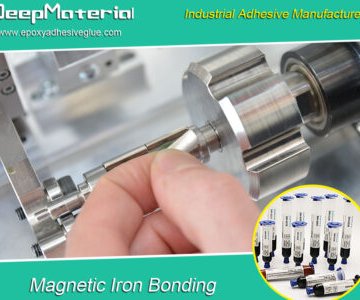Understand The Importance Of One Part Conductive Silver Epoxy Adhesive Glue

Conductive epoxy glue for adhesives is perfect for any glue project you’re working on. It’s very simple to use and has superior high-quality when compared to other adhesives on the market. This glue is also long lasting and will not wear off or become tarnished over the course of. In this tutorial, we will be using an adhesive that is conductive to create a beautiful necklace. The adhesive to affix the chains of silver to the stones, then using a heating gun to heat the chains until they are nice and bright yellow.
What is conductive, silver epoxy glue?
Conductive Silver Epoxy Adhesive glue a great method to connect things. It is a non-toxic glue that is great for bonding materials such as fabrics, metals as well as plastics. It’s also very durable and can hold up to an enormous amount of force. You can utilize the conductive silver epoxy adhesive glue to join items in different ways. It can be used to join objects using a permanent adhesive or apply it to glue objects using a temporary adhesive. Both methods are great however, permanently adhesives are more popular because it is easier to use and does not leave any residue behind on the object it is attaching.Like to learn more about the Best One Part Conductive Silver Epoxy Adhesive Glue You can visit This Website https://www.epoxyadhesiveglue.com/product-category/conductive-silver-glue/ for more information.

How do I use an adhesive that is conductive, such as silver epoxy
There are a lot of different types of glue on the market, but the one you choose must be determined by the kind of project you will be working on. For instance, if you intend to make use of Best One Part Conductive Silver Epoxy Adhesive Glue in order to attach pictures to walls, you need to choose one different kind of glue than if you are planning to to attach images to furniture. Conductive silver epoxy adhesive glue is extremely durable and holds even the smallest pieces of metal. It’s also easy to work with and is perfect for many different applications.
How can you make a beautiful necklace with conductive silver epoxy adhesive glue
One of the most effective methods of using the conductive adhesive silver is to create stunning necklaces. If you utilize this glue and you are able to make an array of various types of necklaces, such as metal-and-silver necklaces, glass and silver necklaces and much more. When you use the conductive adhesive silver epoxy that you can make a delicate and beautiful necklace without having to worry about your precious silver or gold jewelry being scratched or tarnished. You can also make use of the conductive adhesive silver to create a durable and long-lasting necklace. By using this adhesive, you can create necklaces that last for a long time.
Conclusion
If you’re planning on using one part conductive silver adhesive glue to complete your next project, it is recommended that you go through the instructions carefully. Some individuals find the glue to be too robust, which is why it is crucial to try the glue prior to you begin any project. Additionally, it is essential to be conscious of the heat the adhesive could generate. If you’re using the adhesive on a large piece of surface, it is best to use a heat-resistant object, like a piece of metal, to block the adhesive. This will help make sure that the adhesive does not stick to the metal and causing an ignition. Also, it is essential to keep the adhesive and heat of your face. If you are using the application on your face, it is recommended to use protective gloves.



Ingen kommentarer endnu